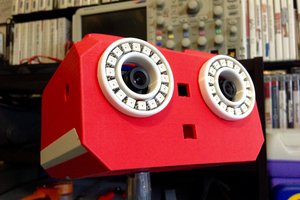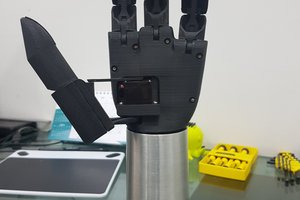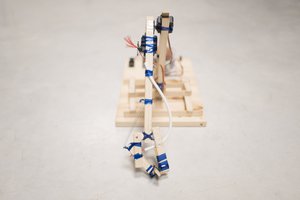There is a remarkable variety of features people seem to want in something so simple, so I started with the fundamentals: reliability and low cost.
I looked around and while there are a great number of cat feeders published, there are severe problems with all of them:
-unreliable, including due to complexity and possibility of build errors, part breakage, jamming. Not clear if the system was made strong enough in the right areas etc. also may not work for other kibble types that the maker did not test etc.
-expensive
-labor intensive to print, assemble, program, wire and/or use.
-hard to source parts
-not modular/readily hackable
-no source code. STL files are not source code, they are semi compiled, sort of more halfway between binaries and source code; they are hard to modify cleanly.
Although some of these designs are clearly produced by very skilled people, and the prints are good, the auger design for instance is fundamentally inadequate because kibbles tend to get caught in the mechanism. Secondly they jam due to bridging and other reasons.
Although clearly a lot of work went into them, it was pretty clear I did not want to actually build any of them, given the high chance of it not working and just sapping my time anyway. I asked myself if I could think up a really reliable low cost and and easy to make mechanism. I came up with a promising idea and went for it. If I could not I would have bought one instead.
The major problem with every single design I found was the jamming and cloggage issue, combined with weak parts and lack of source code to even rectify the issue. The augers and rotating paddle wheels can get kibbles in where the parts come close together, in every case. Commercial feeders overcome this by making those parts out of rubber so that the parts just bend out of the way and things can still work.
That's a possibility and I can print out of TPU but it's better to just design things so the kibble is poured and moved around in a different way.
I considered the use of an archimedes screw, which is probably a good idea, however it is considerably more complex and expensive than this mechanism.
Google drive, with manual and the latest source code will be there: https://drive.google.com/drive/folders/1OKfPI49vfLiHCHYxxus5mOJ-Af9_RXgy?usp=sharing
Features include:
-hopper size is about 1.3 liters.
-scoop size/dispensing is very consistent but you need to weigh how many scoops exactly equal how many grams for your exact kibble
-Web browser interface - enter the IP address. The ip address changes sometimes, though, it's DHCP based, so use Fing or another network analyser to tell you the ip address of the device if that happens. A static ip address is possible, that's just another (small) project for another day.
-MQTT interface. I use adafruit.io. This is a generic, broadly compatible internet-enabled interface that allows you to trigger dispensation of any number of scoops from anywhere, even away from home. You can make it interface to google home, amazon Echo etc. Although I'm not too clear on how I have read there are several ways to do it.
-Hackable, maintainable, modifiable, modular. Anything that you break or which in the many years ahead wears out can be replaced! Right to repair. You can tweak and re-program it to your heart's content, interface it to other devices through the WiFi interfaces or even get in there and connect to the microcontroller pins, if you want.
-Sets it's time automatically over the internet, so no problem with power outages
-convenient interface for rechargeable, automatic-charging backup battery. (4 AA NiMH with a 1 ohm 10 watt resistor, see manual for details).
-You can use any bowl you want, or slow feeder devices or whatever you wish. The dispensing mechanism is reliable without the need for sensors, so the system is simple that way!
Some of these...
Read more »
 ThunderSqueak
ThunderSqueak
 Giovanni Leal
Giovanni Leal
 Daren Schwenke
Daren Schwenke
 circuito.io
circuito.io